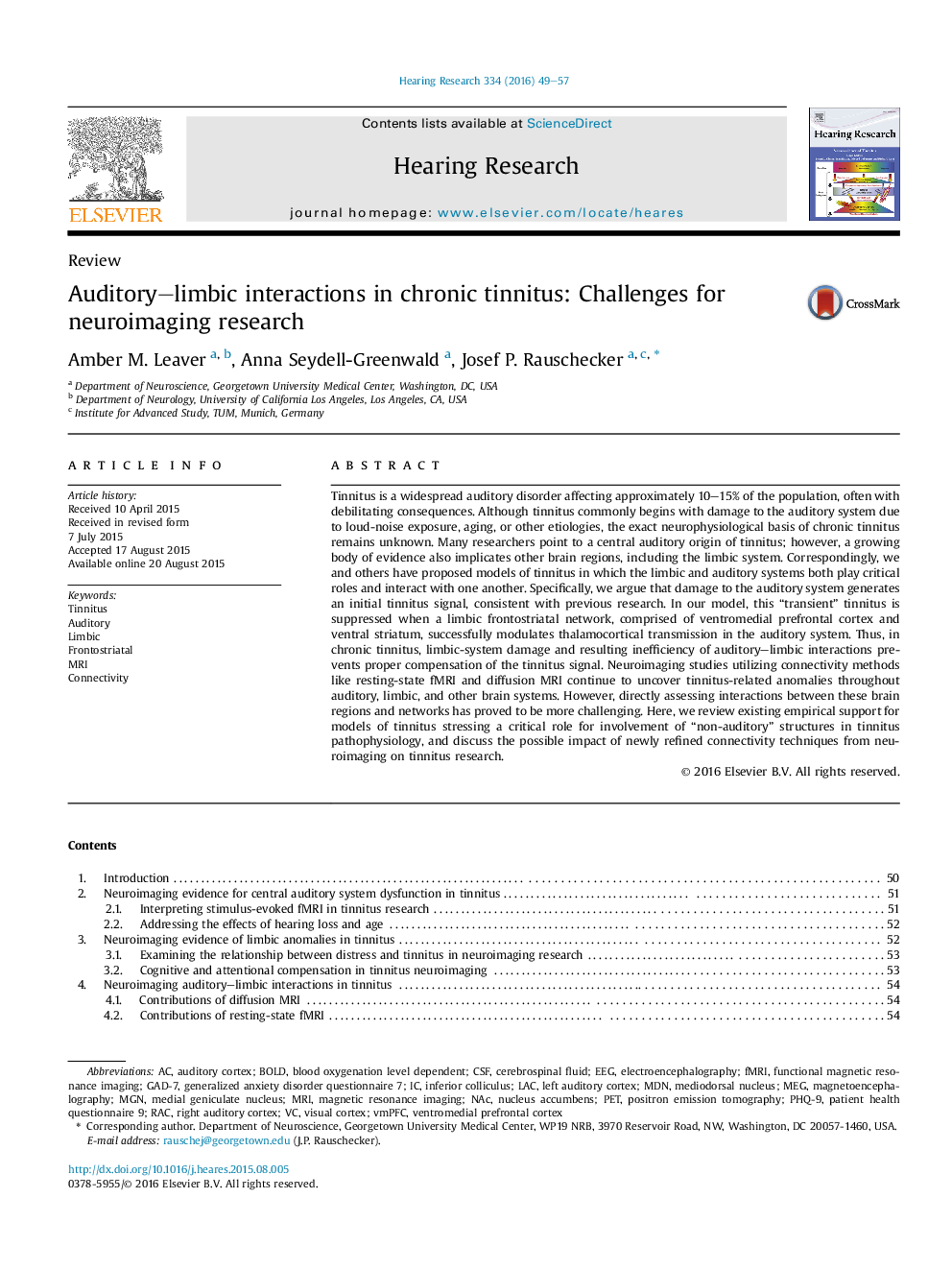| کد مقاله | کد نشریه | سال انتشار | مقاله انگلیسی | نسخه تمام متن |
|---|---|---|---|---|
| 4355074 | 1615566 | 2016 | 9 صفحه PDF | دانلود رایگان |
• We review evidence supporting auditory and limbic contributions to tinnitus pathophysiology.
• Assessing auditory–limbic interactions with connectivity neuroimaging is a challenge.
• Recent findings and new connectivity methods will impact models of chronic tinnitus.
Tinnitus is a widespread auditory disorder affecting approximately 10–15% of the population, often with debilitating consequences. Although tinnitus commonly begins with damage to the auditory system due to loud-noise exposure, aging, or other etiologies, the exact neurophysiological basis of chronic tinnitus remains unknown. Many researchers point to a central auditory origin of tinnitus; however, a growing body of evidence also implicates other brain regions, including the limbic system. Correspondingly, we and others have proposed models of tinnitus in which the limbic and auditory systems both play critical roles and interact with one another. Specifically, we argue that damage to the auditory system generates an initial tinnitus signal, consistent with previous research. In our model, this “transient” tinnitus is suppressed when a limbic frontostriatal network, comprised of ventromedial prefrontal cortex and ventral striatum, successfully modulates thalamocortical transmission in the auditory system. Thus, in chronic tinnitus, limbic-system damage and resulting inefficiency of auditory–limbic interactions prevents proper compensation of the tinnitus signal. Neuroimaging studies utilizing connectivity methods like resting-state fMRI and diffusion MRI continue to uncover tinnitus-related anomalies throughout auditory, limbic, and other brain systems. However, directly assessing interactions between these brain regions and networks has proved to be more challenging. Here, we review existing empirical support for models of tinnitus stressing a critical role for involvement of “non-auditory” structures in tinnitus pathophysiology, and discuss the possible impact of newly refined connectivity techniques from neuroimaging on tinnitus research.
Journal: Hearing Research - Volume 334, April 2016, Pages 49–57
